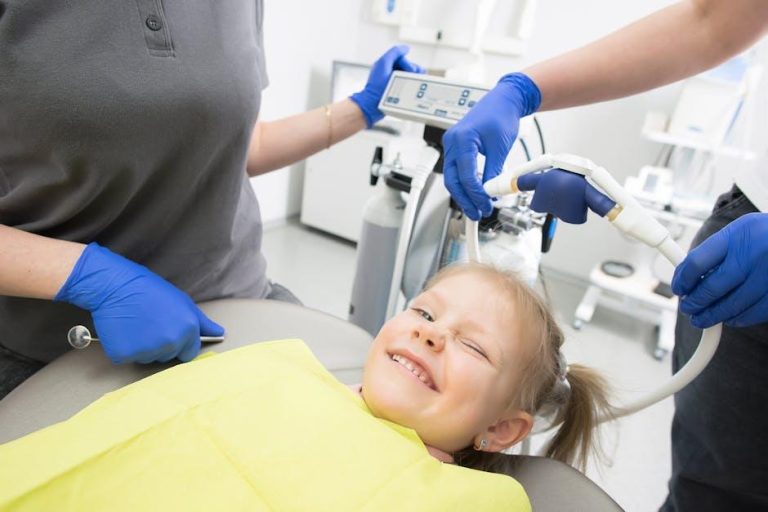1 in 3 Kids Has Dental Problems, Poll Finds – U.S. News & World Report
A recent poll has uncovered a concerning trend in children’s health in the United States: one in three kids has dental problems. This alarming statistic sheds light on the prevalence of oral health issues among children, and it highlights a growing public health concern that demands attention. From cavities to gum disease, dental problems in children can affect their overall well-being, academic performance, and quality of life.
Understanding the Scope of Children’s Dental Problems
According to the U.S. News & World Report poll, dental health challenges among children are more common than many parents might expect. With approximately 33% of children facing dental issues, it’s crucial to understand what these problems entail and how they impact young lives.
- Common dental problems: Cavities (tooth decay), gum inflammation (gingivitis), tooth sensitivity, and misaligned teeth.
- Age groups affected: Children from preschool age through adolescence are all susceptible to dental problems.
- Demographics: Low-income and minority communities often experience higher rates due to barriers in accessing dental care.
Why Are Dental Problems So Prevalent Among Kids?
The rise of dental issues in children can be attributed to several factors, including dietary habits, lack of routine dental care, and socioeconomic challenges:
- Poor oral hygiene practices: Inadequate brushing and flossing lead to plaque buildup and cavities.
- High sugar consumption: Frequent intake of sugary snacks and drinks fuels tooth decay.
- Limited access to dental care: Financial constraints and lack of dental insurance restrict preventive visits.
- Insufficient parental awareness: Many parents underestimate the importance of early dental checkups.
Impacts of Dental Problems on Children’s Health
Dental issues do more than cause toothaches; they can negatively affect a child’s physical and emotional health in multiple ways:
- Difficulty eating and speaking: Pain and discomfort can hinder normal nutrition and communication.
- Blocked learning and concentration: Chronic dental pain affects school attendance and focus.
- Low self-esteem: Visible dental problems may cause children to feel self-conscious or socially isolated.
- Potential for serious infections: Untreated oral infections can spread, resulting in more severe health complications.
Table: Common Dental Problems in Children and Their Symptoms
| Dental Problem | Symptoms | Impact |
|---|---|---|
| Cavities (Tooth Decay) | Toothache, sensitivity, visible holes or pits | Pain, difficulty eating, risk of infection |
| Gingivitis (Gum Disease) | Red, swollen gums, bleeding during brushing | Gum discomfort, bad breath, potential for more severe disease |
| Tooth Sensitivity | Pain when consuming hot, cold, or sweet foods | Discomfort, avoidance of certain foods |
| Misaligned Teeth | Crowded teeth, difficulty chewing, speech issues | Self-esteem issues, increased risk of decay |
Practical Tips for Parents to Prevent Dental Problems in Kids
Preventing dental problems early can save children from pain and costly treatments down the road. Here are essential tips to support your child’s dental health:
- Establish a consistent oral hygiene routine: Help your child brush twice a day using fluoride toothpaste and floss daily.
- Schedule regular dental checkups: Visit a pediatric dentist at least every six months for professional cleanings and early problem detection.
- Encourage healthy eating habits: Limit sugary snacks and drinks; promote fruits, vegetables, and water instead.
- Lead by example: Children often mimic parental habits, so maintain good oral health yourself.
- Use dental sealants: Talk to your dentist about sealants, which protect the chewing surfaces of permanent molars.
The Role of Schools and Communities
Communities and schools can play a critical role in improving children’s dental health by:
- Providing school-based dental screenings and fluoride treatments.
- Promoting educational programs focused on oral hygiene.
- Facilitating access to affordable dental care through public health initiatives.
Case Study: Improving Oral Health in Underserved Communities
A community health organization in California implemented a program providing free dental screenings and education for low-income families. After one year, the initiative achieved measurable improvements:
| Metric | Before Program | After Program |
|---|---|---|
| Children with untreated cavities | 45% | 25% |
| Parental awareness of dental hygiene | 40% | 85% |
| Dental visits in past 6 months | 30% | 65% |
This case highlights how targeted efforts can significantly reduce dental problems among children, especially in vulnerable populations.
Conclusion: Prioritize Your Child’s Dental Health Today
The poll revealing that 1 in 3 kids suffers from dental problems should serve as a wake-up call for parents, caregivers, and policymakers alike. Oral health is a vital component of a child’s overall health — neglecting it can lead to pain, infection, and lifelong challenges. Through education, preventive care, and community support, we can work together to improve dental outcomes for children across the United States.
Take proactive steps today by establishing good oral hygiene, ensuring regular dental visits, and advocating for dental health education in your community. The smile of a child is priceless — let’s help keep it healthy.


